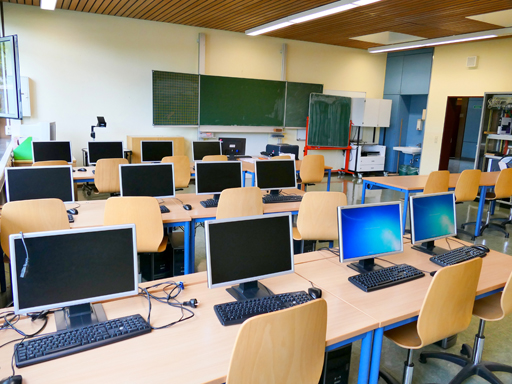6.3 Technology versus pedagogy

There is often a tension between the significance of technology and pedagogy in educational technology. For some, the technology is not significant and their focus is on pedagogy. Others prefer to emphasise the possibilities that technology offers us and wait for theory to catch up. It is probably more useful to think of the two as being involved in an iterative dialogue. Technology opens up new possibilities and is used in ways that its designers never intended, which in turn drives theoretic development which feeds back into technology development, and so on.
This view of technology, and particularly how it relates to education, is addressed by Martin Weller (2011) in Chapter 1 of The Digital Scholar, reproduced below.
Technology determinism
This talk of technology ‘allowing’, ‘facilitating’, ‘affording’ or ‘suggesting’ methods of working or approaches raises the issue of technological determinism. This subject arises in almost every discussion around technology and education, so it is worth addressing it early. Technology-related viewpoints tend to be dystopian or utopian in nature. Examples of such views are not only to be found in science fiction. Educational technology literature over the past twenty years shows the promises and fears that have been associated with a variety of technologies, including computers, CD-ROM, computer-assisted learning, artificial intelligence, virtual reality and videodisc. The Internet and social media are just the latest in this list.
What both the positive and negative viewpoints have in common is that they see the technology itself as shaping human behaviour, so-called technological determinism, a phrase first coined by American sociologist Thorstein Veblen. The technological deterministic viewpoint is that technology is an autonomous system that affects all other areas of society. Thus human behaviour is, to a greater or lesser extent, shaped by technology. This seems to remove human will, or ingenuity, from the social process, and is thus usually rejected as excessively mechanistic. However, there seems to be such an anxiety about being labelled a ‘technological determinist’ that many people in education seek to deny the significance of technology in any discussion. ‘Technology isn’t important’, ‘pedagogy comes first’, ‘we should be talking about learning, not the technology’ are all common refrains in conferences and workshops. While there is undoubtedly some truth in these, the suggestion that technology isn’t playing a significant role in how people are communicating, working, constructing knowledge and socialising is to ignore a major influencing factor in a complex equation.
As this book seeks to explore the ways in which approaches founded in new technologies can influence scholarly practice, the charge of technological determinism may well be raised. It is not my contention that the presence of the technology will automatically lead to certain changes. Indeed, many of the interesting examples of digital scholarship are entirely unpredicted, what is often termed ‘emergent use’, which arises from a community taking a system and using it for purposes the creators never envisaged. This is particularly a feature of the kind of fast, cheap and out-of-control technologies that constitute much of the social media/Web 2.0 collective. For instance, it has been well recorded that Flickr developed from a company which was aiming to manufacture an online game, and the photo-sharing application was just a simple tool to aid the game. As founder Caterina Fake commented, ‘Had we sat down and said, “Let’s start a photo application”, we would have failed. We would have done all this research and done all the wrong things’ (Graham 2006). Similarly, the proliferation of applications that have been built to interact with Twitter and Facebook were not predicted by the founders of those companies, nor the way in which people have used them.
A deterministic perspective would underestimate the role of people and the context in which the technology is used. Kling, McKim and King (2003) propose a ‘sociotechnical interaction network’, which emphasises the interaction between people, institutions and technologies. They analysed ‘e-scholarly communication forums’ to reveal the relationship between participants, resource flows, business models and other individuals and groups who do not participate in the network directly. Their work builds on what has been termed ‘social construction of technology’ (or SCOT), which is seen as a direct response to technological determinism (Pinch and Bijker 1984). In this perspective technology development is seen as the result of competition and negotiation between different groups or actors, rather than a finished artefact that is released (or inflicted) upon a rather submissive society.
SCOT is not without its critics, for example, Clayton (2002), and the detailed debate around the interplay between actors and technology is beyond the scope of this book. What the work of Pinch and Bijker and Kling et al. highlights is that it is possible to examine technology, technological influence and practice without falling into the trap of technology determinism. In this book it is the complex co-construction of technology and associated practice that is intended, with an iterative dialogue between the technology and the practices that it can be used for. Inevitably though, for the sake of simplicity and to avoid repetition, this complexity may be somewhat glossed over, and I will refer to a technology or an approach as if there is a direct line between them. For this I ask the reader’s indulgence and request that it should not be taken to be demonstrative of a technological deterministic mindset, while at the same time recognising the significance of technology in the overall process.
This tension between the role of technology and pedagogy is particularly acute in open education. Many of the approaches we have looked at would simply not have been possible without internet technology. But in turn, as we have seen with MOOCs, educators need to devise practices that will enable these possibilities to be realised. We now also need to develop concepts and theories to interpret what is happening, which is itself shaping the next phase of technology development to support MOOCs.
The focus of this week then is on the types of technology that support open education, as an understanding of these is important in appreciating the direction and possibilities in the field.
Activity 21: The chicken and egg conundrum – technology and pedagogy inter-relate
- Use your blog to discuss the relationship between technology and pedagogic theory and practice, drawing on your own context and experience.
- What is your own experience and view?
- Do you regard either pedagogy or technology as more significant than the other?
- How do technology and pedagogy influence each other?
- Do you have experience where either technology or pedagogy has been given more weight than the other?
When you have completed your blog post, if you are content to share your thoughts in this way, Tweet about it using the hashtags #h817open and #Activity21.
